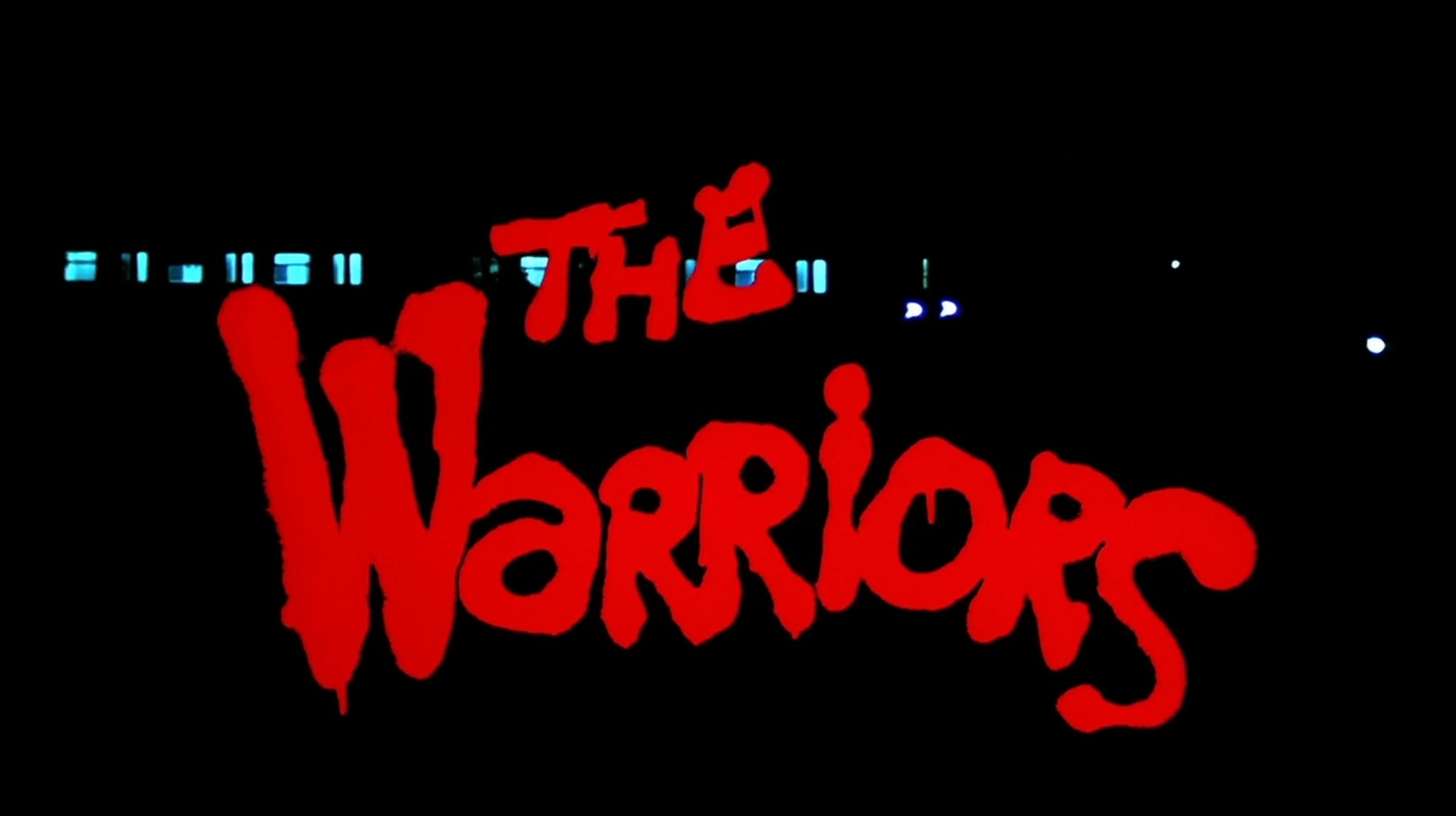 Inevitably, there are spoilers here. Read with care. Thanks!
Inevitably, there are spoilers here. Read with care. Thanks!
What is It? The Warriors, directed by Walter Hill, screenplay by David Shaber and Walter Hill, and starring Michael Beck, James Remar, David Patrick Kelly, Dorsey Wright, Deborah Van Valkenburgh, Roger Hill and Lynn Thigpen.
First viewing? No. I’m not sure when I last saw the original theatrical cut; probably in the 90s on VHS. The very ast time I watched it, though, it was the Ultimate Director’s Cut, and I gave up just after the undercover cop scene. Which is weird, because there was only about thirty minutes left at that point.
What’s it about? A Coney Island gang called the Warriors attend a city-wide gang meeting in the Bronx to see Cyrus, a charismatic gang boss who wants to unite the hundreds of gangs and take over the city. But when Cyrus is murdered and the Warriors are blamed, they have to run and fight their way across New York to get back home.
What are your thoughts about it? This movie came out when I was 7, and I remember that poster printed in black and white in the newspaper. Not gonna lie, it scared me a bit. These tough customers, hundreds of them, staring at me, and why does that baseball player look like he’s in Kiss? That, and the reports that there was violence at theaters playing the movie told me, a wimp and coward at heart, to avoid it.
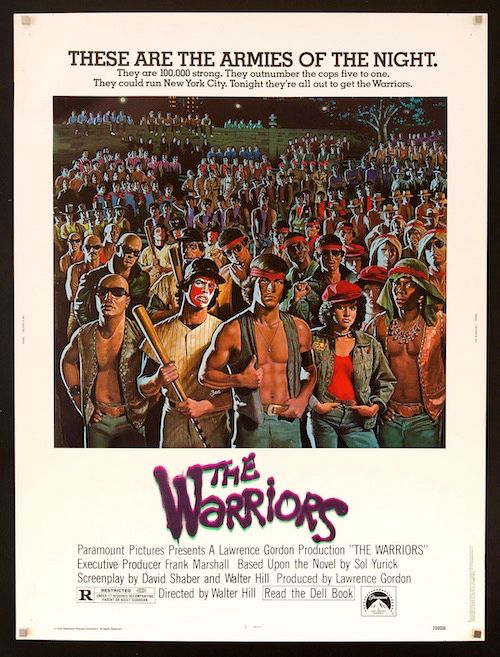 My young self didn’t notice those scary gang members sitting on the wall like kindergartners.
My young self didn’t notice those scary gang members sitting on the wall like kindergartners.
Flash-forward about ten years, and I’m surprised to discover this movie is nothing like I thought it was. For one, it’s an absolute puppy dog of a movie, one that just wants to please. What looked like wall to wall violence is actually just a simple journey narrative that takes place in a vaguely alternate New York, that borders on science fiction (“Sometime in the future…”), at times feeling like The Wiz is happening at the same time over in Harlem. (I mean, it kind of was, but you know what I mean.) Despite its non-judgmental focus on violent gangs, it doesn’t want to frighten, provoke, or even make you think. It just wants to grab your hand and take you on a ride.
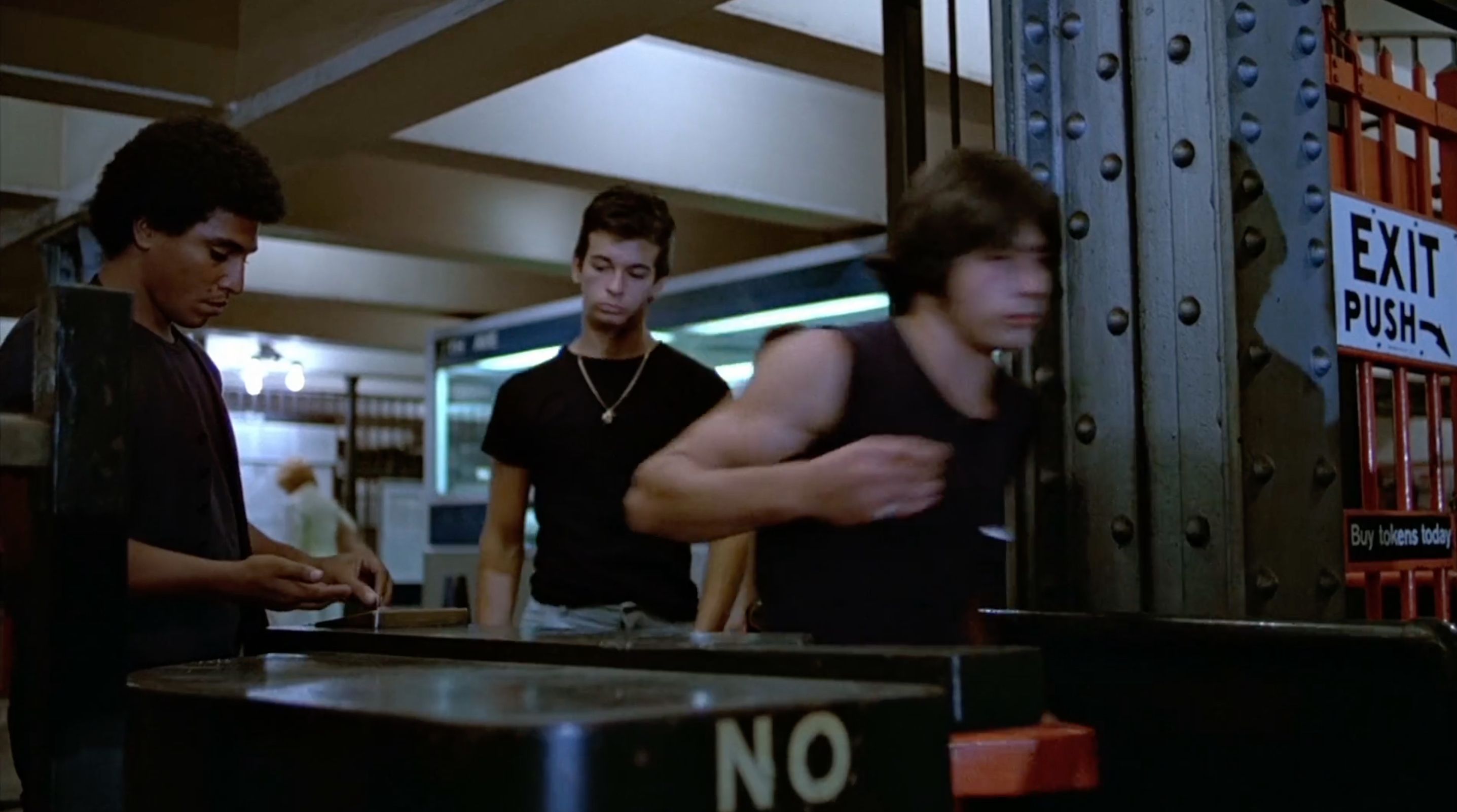 More scary gang members, this time paying for the subway. Fucking nihilists!
More scary gang members, this time paying for the subway. Fucking nihilists!
Early Walter Hill movies like The Driver and Southern Comfort, and 1984’s Streets of Fire, strip their stories and their characters down to the basics. (Characters in The Driver are actually named The Driver, The Detective, The Player, etc.) But comparatively, The Warriors is on another level. It’s less a screenplay than a Tony Smith sculpture. The characters, unlike those in The Driver, actually have names, but they’re so unimportant you probably won’t remember them. With one exception, Hill’s actors are closer to Robert Bresson’s “models,” where any inner life is illuminated through action and mise en scéne. Nearly every aspect of the movie is sanded down until it only has one function: momentum.
It’s apparent right from the get go. Hill has to set the movie up, and he does so by pingponging back and forth between the Warriors discussing Cyrus and the various gangs making their way across the city to the meeting. Every cut back and forth is a jump in time and space, and every cut pulls us along, intriguing us with information about the big gang meeting and tantalizing us with glimpses of other gangs in motion.
Once Cyrus is murdered and the narrative beings in earnest, the Warriors are nearly constantly walking, running, or traveling by subway. It’s almost as if there are consequences if they don’t follow the film’s trajectory. Any time a character stops, whether to parley with another gang, hang out with a group of seemingly friendly women, or prepare to sexually assault a seemingly harmless woman, there’s the threat of getting taken out of the story. Keep moving, or die.
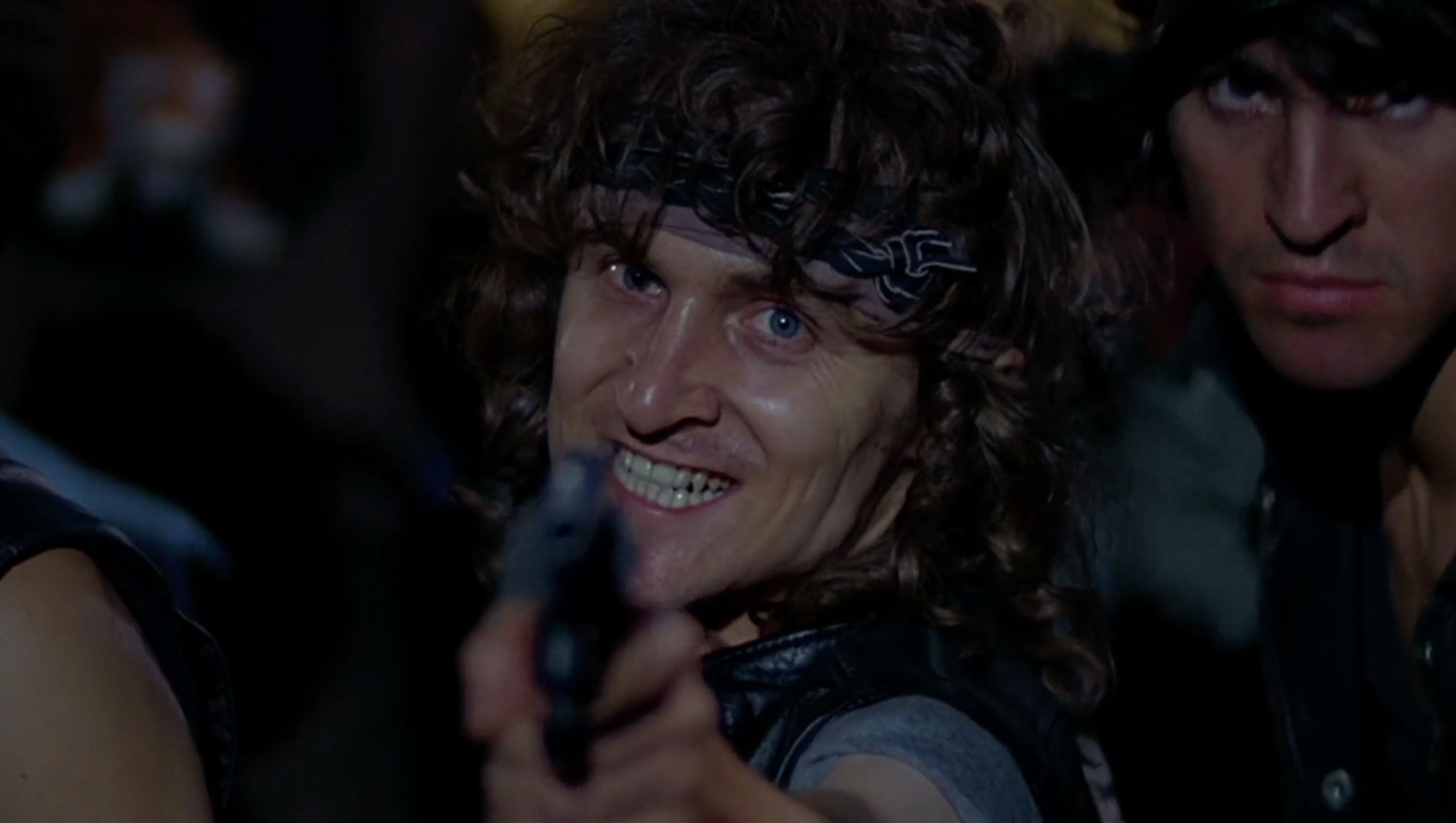 Sometimes it’s hard for me to believe that this pint-sized psycho is also Jerry Horne, eccentric hippie brother of Ben Horne, on TWIN PEAKS.
Sometimes it’s hard for me to believe that this pint-sized psycho is also Jerry Horne, eccentric hippie brother of Ben Horne, on TWIN PEAKS.
With this focus on momentum, it would be easy to compare it to a video game, although, for the time period, the more common reference point would be comic books.
Oh no.
Oh no.
See, if you watch this today, it’s likely the only version you’ll find is what’s called the “Ultimate Director’s Cut.” This version, which kinda proves that directors don’t always know what’s best for their own film, adds a completely unnecessary introduction that compares the forthcoming film with a real ancient Greek story with mythic overtones, and then…
And then…
And then it replaces a number of straight edits with dissolves to comic book-style pages, depicting scenes as illustrated panels, complete with captions, before dissolving back to the movie. It is atrocious. The comic book panels look amateurish — painted-over movie frames and Comic Sans — and every time they pop up, they destroy the momentum, the one thing the movie values over all else. I’m not kidding when I say that it almost ruins the movie for me.
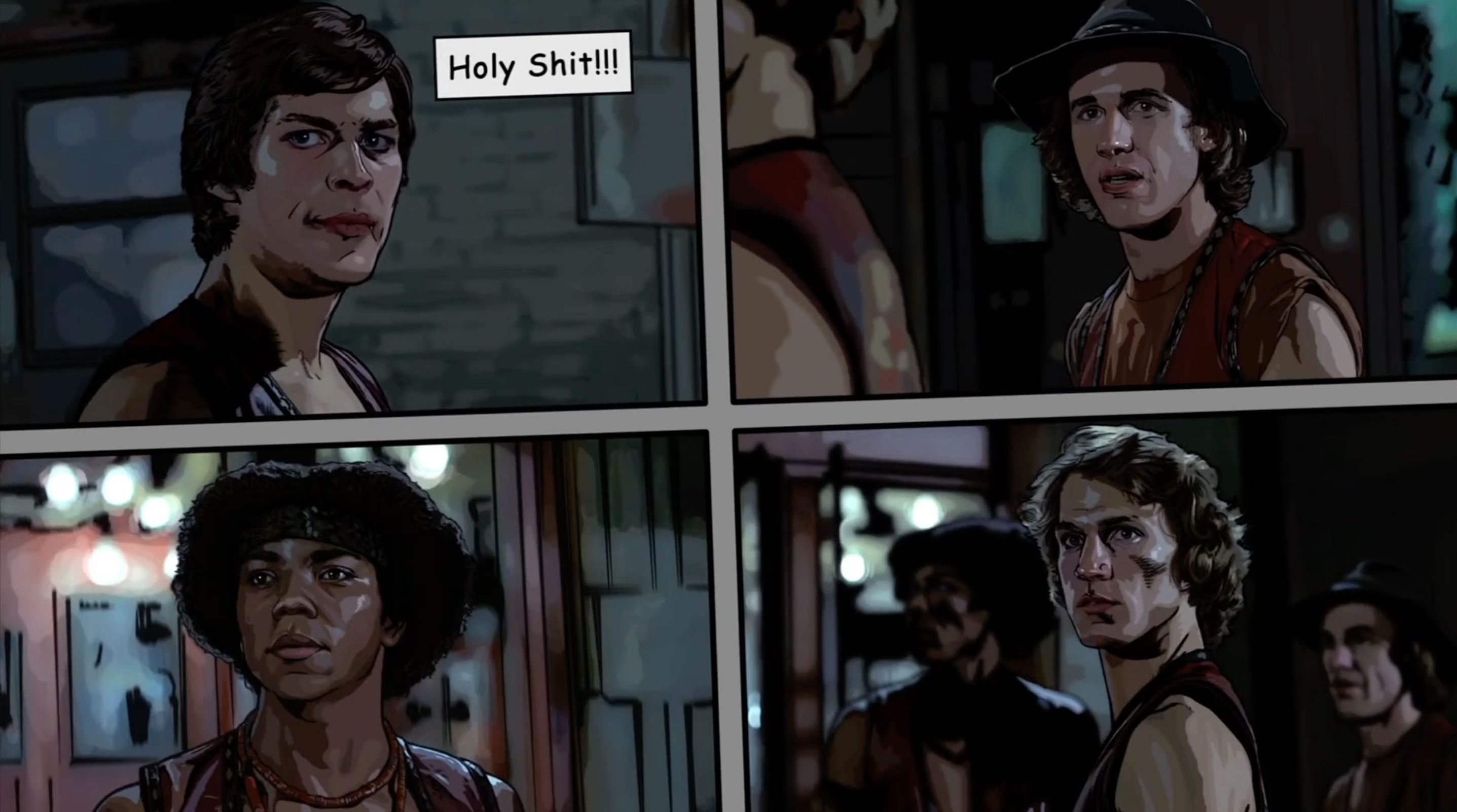 One of those words is correct, Ajax.
One of those words is correct, Ajax.
And yet, I’ve come to realize after this last viewing, even if I could see the old version, it’s not quite the great film I once thought it was. There’s a number of things that keep me from embracing it like I used to.
For one, the premise… isn’t quite the premise? The Warriors don’t actually know there’s a bounty on them until around the hour mark of a ninety minute movie. One could make the case this is a Hitchcockian gambit, that they’re unaware of the proverbial bomb under the table, but in practice it’s not quite like that. It’s hard to see what the Warriors would’ve done different if they had known about the bounty earlier. I don’t even think the Lizzies scene would change much, since they would still be tempted by the “safety” of a group of women. The only thing that would change is that they would know their decisions have added weight and stakes. The storytelling choice here is kind of a whiff.
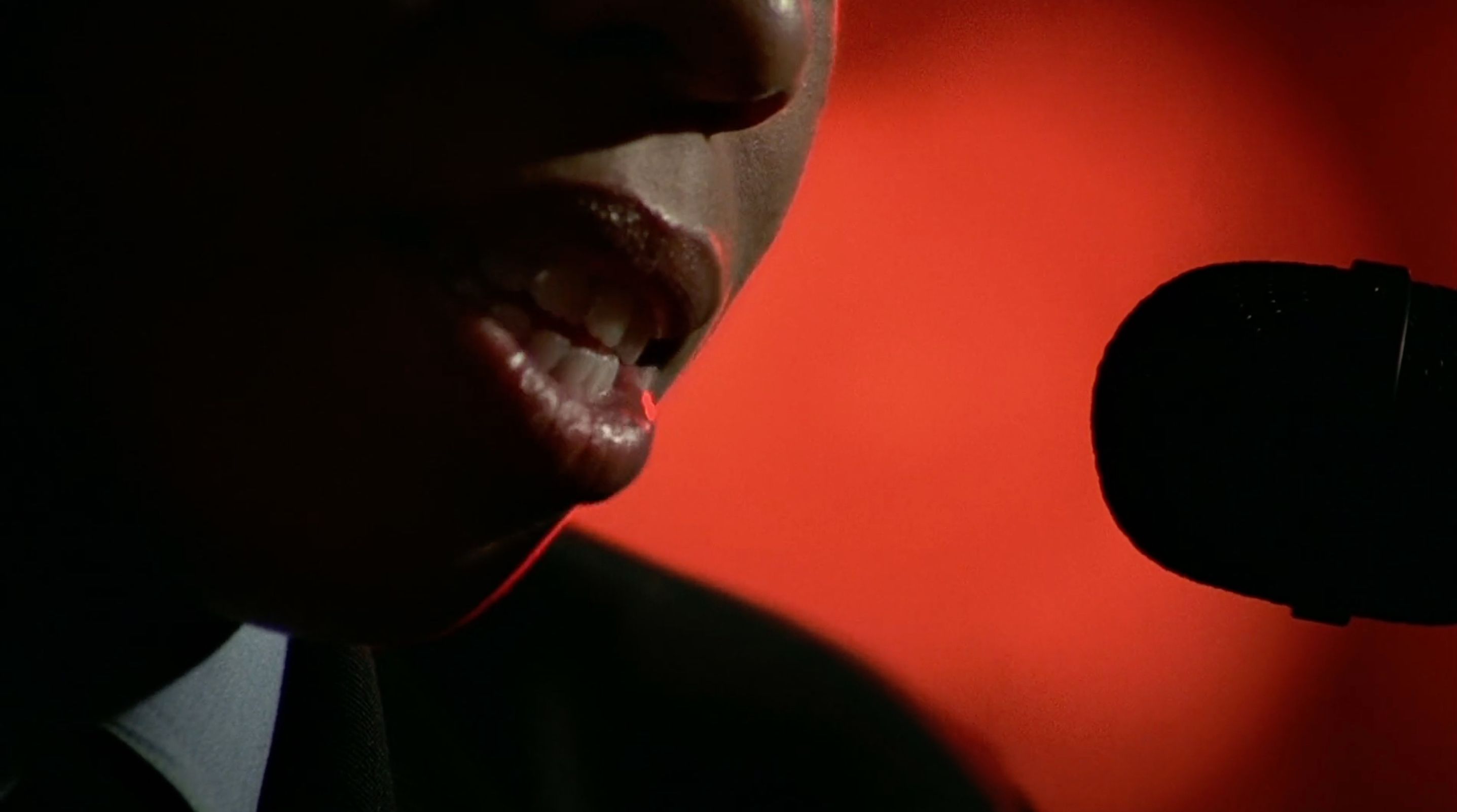 Let’s get down to it, boppers. I didn’t even get a chance to say anything about Lynne Thigpen’s great vocals as the DJ. I have some nitpicks about these interludes, especially when compared to VANISHING POINT, but for now let’s just enjoy the late Ms. Thigpen’s performance.
Let’s get down to it, boppers. I didn’t even get a chance to say anything about Lynne Thigpen’s great vocals as the DJ. I have some nitpicks about these interludes, especially when compared to VANISHING POINT, but for now let’s just enjoy the late Ms. Thigpen’s performance.
There’s another weird storytelling choice at the end. Not only do the Warriors not know they’re wanted until late in the game, they don’t even know who framed them until nearly the end. What’s more, they aren’t even responsible for clearing their own name. A guy we’ve never seen before and never see again informs the Gramercy Riffs of Luther’s culpability. So when the Rogues confront the Warriors on the beach, there’s a lot of potential tension left on the table. (The dramatic burden, if you will, is on Luther; he needs to eliminate the Warriors to solidify his story that the Warriors killed Cyrus. The Warriors are just like, Dude leave us alone.) And to top it all off, the Gramercy Riffs roll in and take care of the Rogues. We don’t even get a rumble!
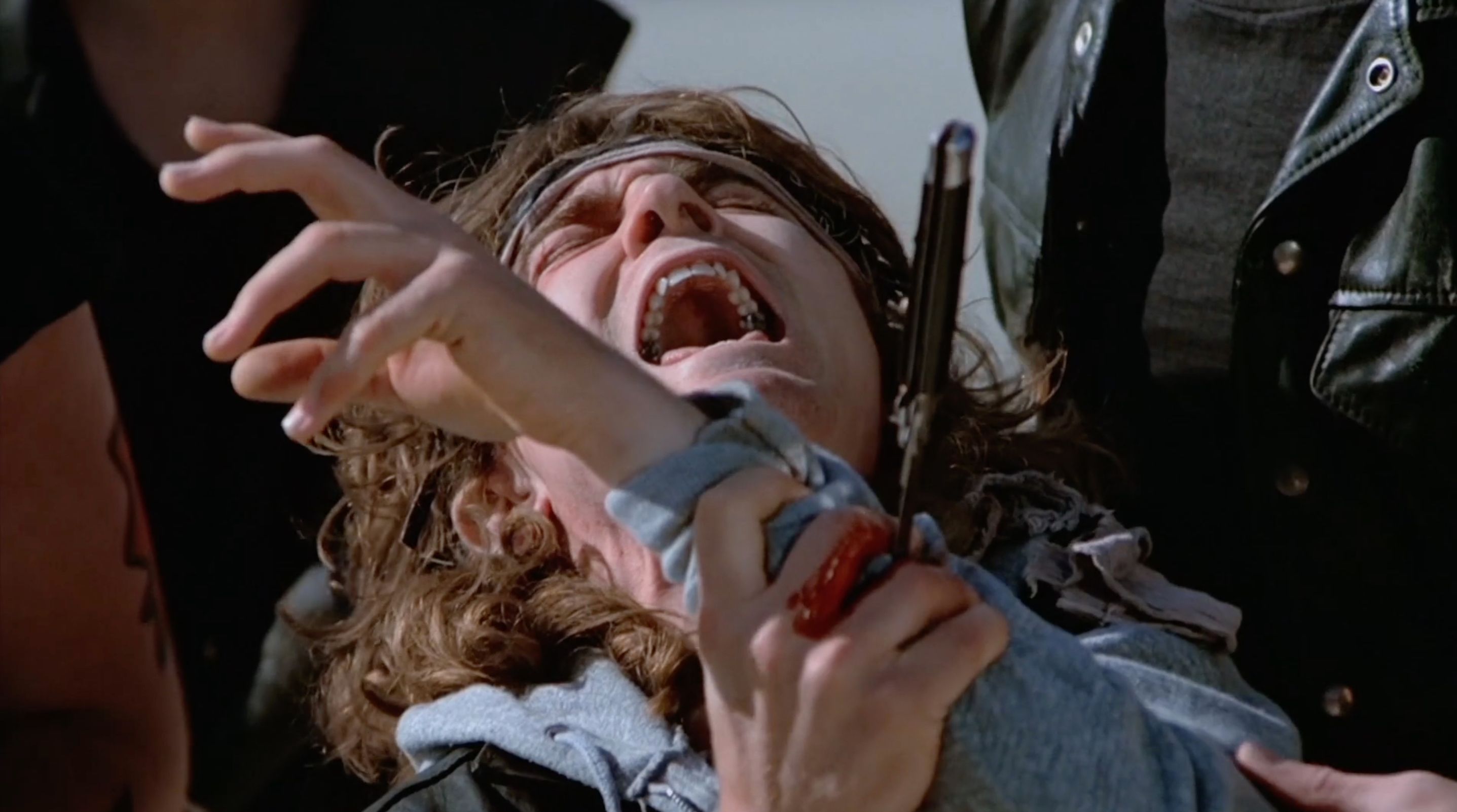 Pretty sure the beach confrontation was shot MOS (without sound), meaning the actors dubbed their lines. If so, this explains David Patrick Kelly’s God-tier vocal scenery chewing here.
Pretty sure the beach confrontation was shot MOS (without sound), meaning the actors dubbed their lines. If so, this explains David Patrick Kelly’s God-tier vocal scenery chewing here.
(Yes, Warrior leader Swan throws a knife into Luther’s arm, giving David Patrick Kelly his best moment when he reveals the whiny crybaby behind the bully. And this technically resolves the dramatic question. But there’s still, you know, a whole gang left for them to fight.)
In the end, I still enjoy The Warriors. I still love its fanciful world, its look, and of course, the undeniable momentum. But at this point, I now think of it as a dry run for Hill’s superior Streets of Fire.
How many stars out of five? Three and a half. Maybe go up to four if I could see the original version.
Where can I stream it? As of this writing1, you can watch it for free on Amazon Prime and Pluto TV, or rent or buy from Amazon Video, Apple, Google Play, YouTube, Redbox, Vudu, DirecTV or AMC Theaters on Demand.
What can we take from it? Cypher System characters are made from three interlocking parts. The first is the Descriptor, which is an adjective like Hardy or Foolish. It usually grants a bonus to one of the three stats (Might, Speed, Intellect), as well as some skills and sometimes a special power and/or limitation. (Check out the new Descriptors I created based on Klute here.) The second is called the Type, which are kind of like classes in D&D. There are four: Warrior (fighter-type), Adept (wizard-type), Speaker (social-type) and Explorer (rogue and everything else-type). Finally there is the Focus, which is like a super-specific subclass that can be paired with any Descriptor and any Type. Today, I present my first handmade Focus, based on The Warriors, and, using the original poster as an inspiration, I’m calling Is a Soldier of the Night.2
Foci are broken up into a series of abilities, which are powers that do one specific thing, sometimes at the cost of stat points. A character receieves new abilities every time they advance in power, which are called Tiers. There’s nearly always two abilities at first Tier of power, then another at Tier 2, then a choice between two at Tier 3, two more abilities at Tier 4 and 5, and finally, a choice between two more at Tier 6. All ability descriptions end with the designation “Action” or “Enabler.” This simply means that an ability that requires an action to use is marked “Action,” while an ability that confers a bonus that’s already been worked in (like a stat increase, for example) is marked “Enabler.”
If I have one criticism of the Cypher System, it’s that Foci often have this amazing title, one that makes you go “Yeah! I want to play that!” and then you get two abilities at Tier 1 and they’re… some skills. Obviously, powerful abilities should be saved for later tiers, but I feel there should be something at Tier 1 that is exciting and makes good on the promise of the Focus title. I’ve tried to follow that philosophy here, and will do so for Foci I create in the future.
Finally, a confession: most of these “new” abilities are abilities from the rulebook, only tweaked slightly. Creating new abilities that don’t overlap with the 1000+ in the rulebook is, would you believe, pretty difficult. I ran out of time to get truly creative, but I hope to return to this entry in the future and inject more originality into it.
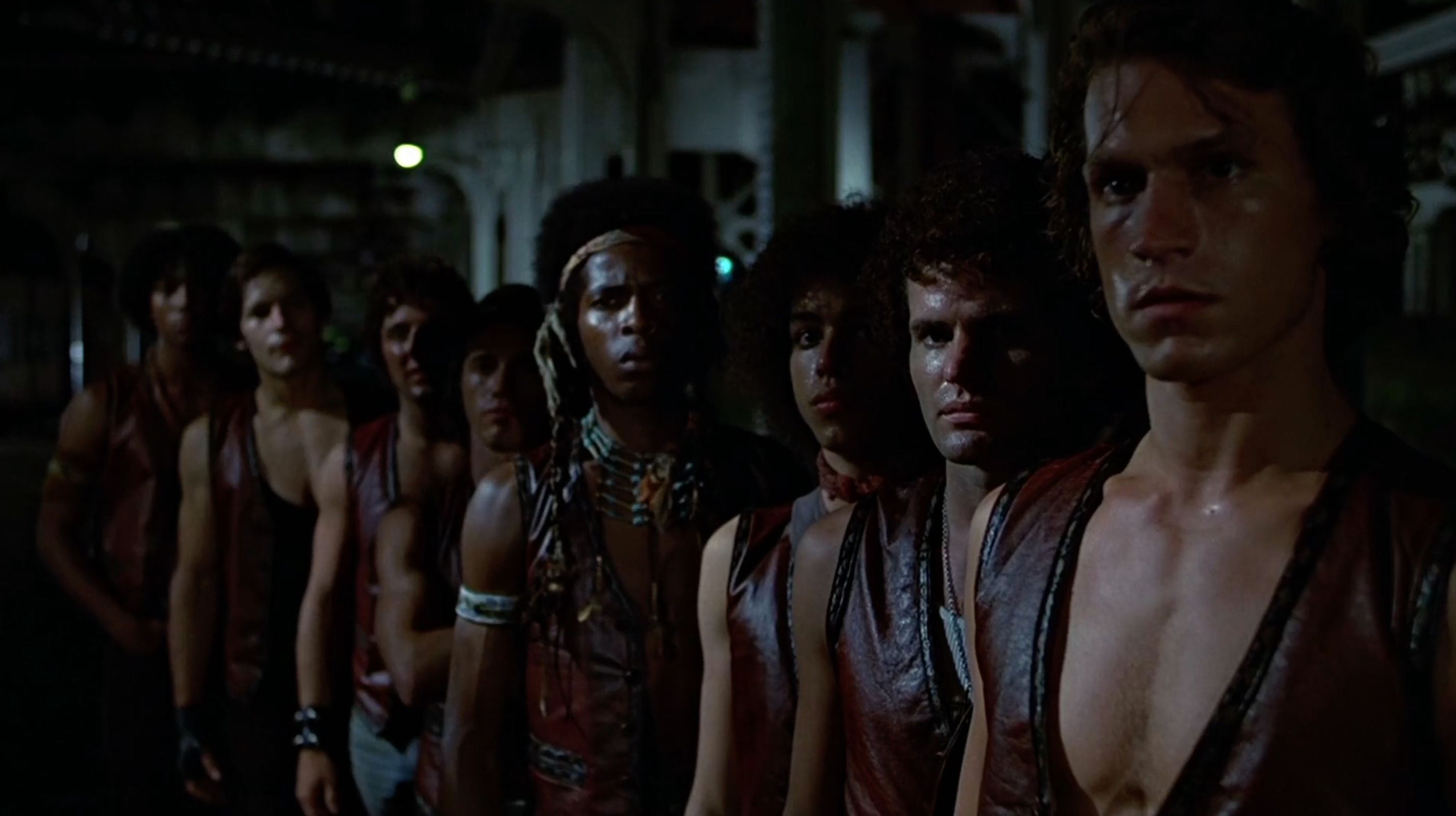 IS A SOLDIER OF THE NIGHT (DESCRIPTOR)
IS A SOLDIER OF THE NIGHT (DESCRIPTOR)
You are a hardened member of a gang that stalks the savage streets of the night
Tier 1: Gang Gimmick
Tier 1: Always Strapped
Tier 2: Let’s Get Down to It Boppers
Tier 3: Bop Our Way Back or Nowhere to Run
Tier 4: Come Out to Play
Tier 5: It’s All Our Turf
Tier 6: Can You Dig It? or War Chief
Gang Gimmick: Your gang has a gimmick that separates them from the other gangs in the city. First, your gang has a distinctive look, like the uniforms and makeup of the Baseball Furies, the vaguely Indigenous American look of the Warriors, the bright yellow jackets of the Electric Eliminators, and so forth. Second, work with the GM to come up with some kind of interesting ability that fits in with your gang’s gimmick. The Baseball Furies could be considered trained with baseball bats, the Gramercy Riffs might be trained in martial arts or have some kind of martial arts ability, the Mimes are trained in suspenders, etc. Action or Enabler.
Always Strapped (2+ Intellect points): You gain immediate access to a Light, Medium, or Heavy weapon. The cost in Intellect points is equal to the weapons’ damage value. (A Light weapon costs 2, Medium 4, and Heavy 6.) Once the weapon is used, it effectively disappears (a molotov cocktail is detonated, a gun only has one bullet, etc.) You may use this ability again after checking the 10 hour recovery box. Action to create.
Let’s Get Down to It Boppers: If you attack a foe in melee who is engaged in melee with one of your allies, you get an asset on your attack task (either Might or Speed). Enabler.
Bop Our Way Back: When in another gang’s territory, you’re always on alert for danger. You gain an asset on your Speed defense tasks. Enabler.
Nowhere to Run (3+ Intellect points): You know exactly where any allies or enemies are within short range (50’), even if they are behind cover, around a corner, inside a building or the like. If you apply two addtional levels of Effort, you can increase the range of detection to Long (100’). Action.
Come Out to Play: You’ve been in this life long enough to know how to rumble effectively. Your attacks are eased. Enabler.
It’s All Our Turf (2 Intellect points): While in the city, you can ask a specific question or a general question about the neighborhood you’re in and come away with useful information. You also know who the local gangs are, their temperament, who they’re affilated with and who they’re fighting, the police activity in the area, and other relevant facts. Action to initiate.
Can You Dig It? (9 Intellect points): You give a rousing speech, and can then convince any number of sentient creatures within a 100’ by 100’ area to regard you positively, as they would a potential friend. Although you can’t directly command them, they will be open to any suggestions you give them. Action.
War Chief (9 Intellect points): You are the one who leads your gang into battle, and the one they look to for orders. If your allies can see and understand you, you can instruct each of them to take the same action. If they heed you, they immediately take this action as an additional action, on top of their normal action allowed during a turn. Action.
Next time on Against the ’70s: Laserblast (1978, Michael Rae)
Originally published 12/13/21 on Substack.
1/9/24↩︎
Nearly all Foci start with a strong verb, like Flies Faster Than a Bullet, Howls at the Moon, or Fights with Panache. Only three start with the relatively weak “is.” Most of the new ones I’ll be creating start with “is,” unfortunately. I could probably rewrite them to give them a stronger verb, but I’ve decided that underlining their connection to the source material is of greater importance.↩︎